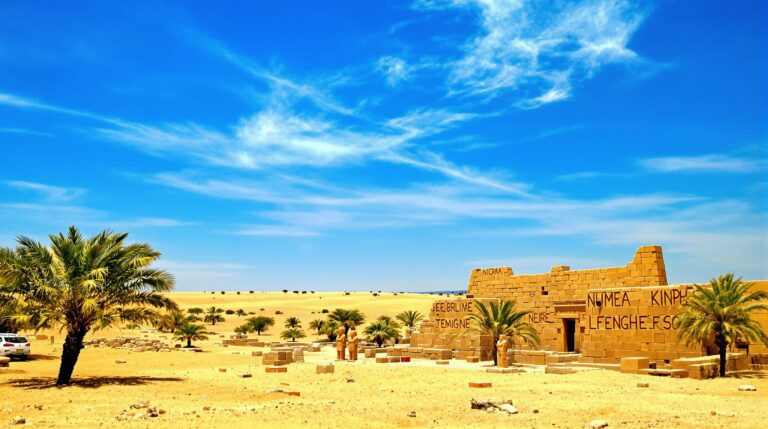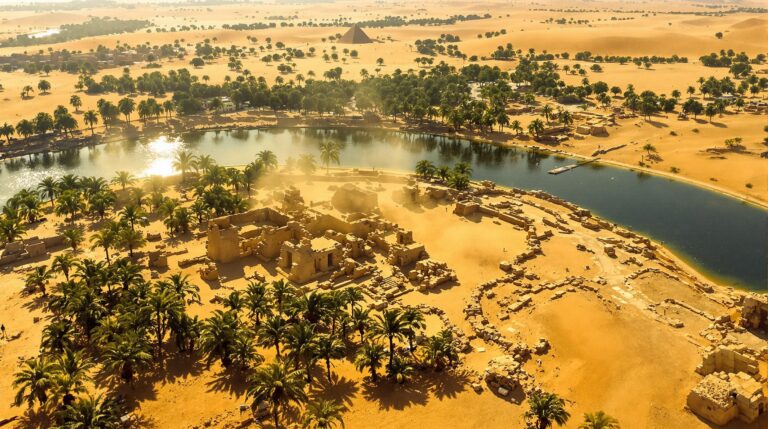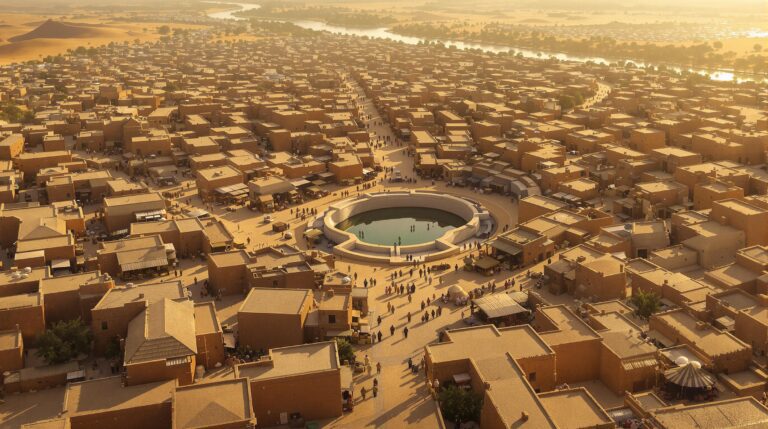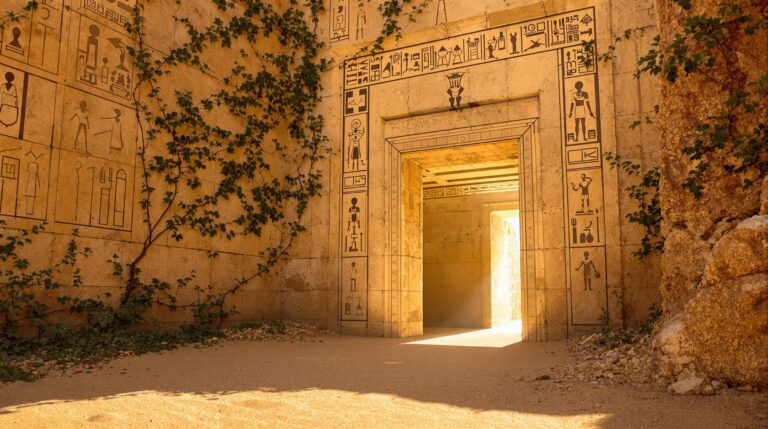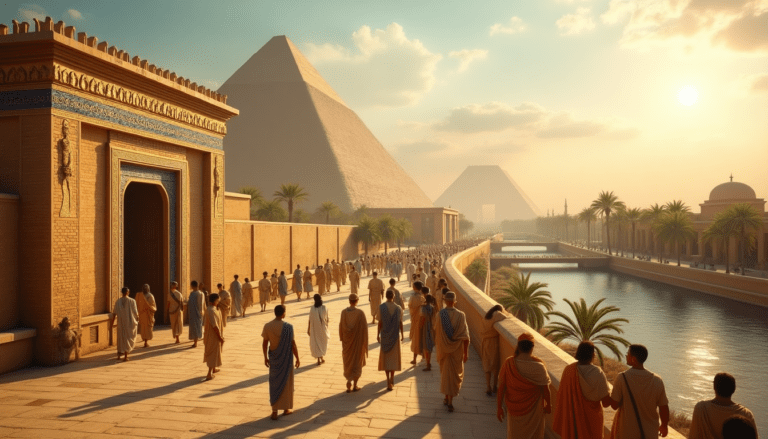The Phoenicians: Masters of the Mediterranean
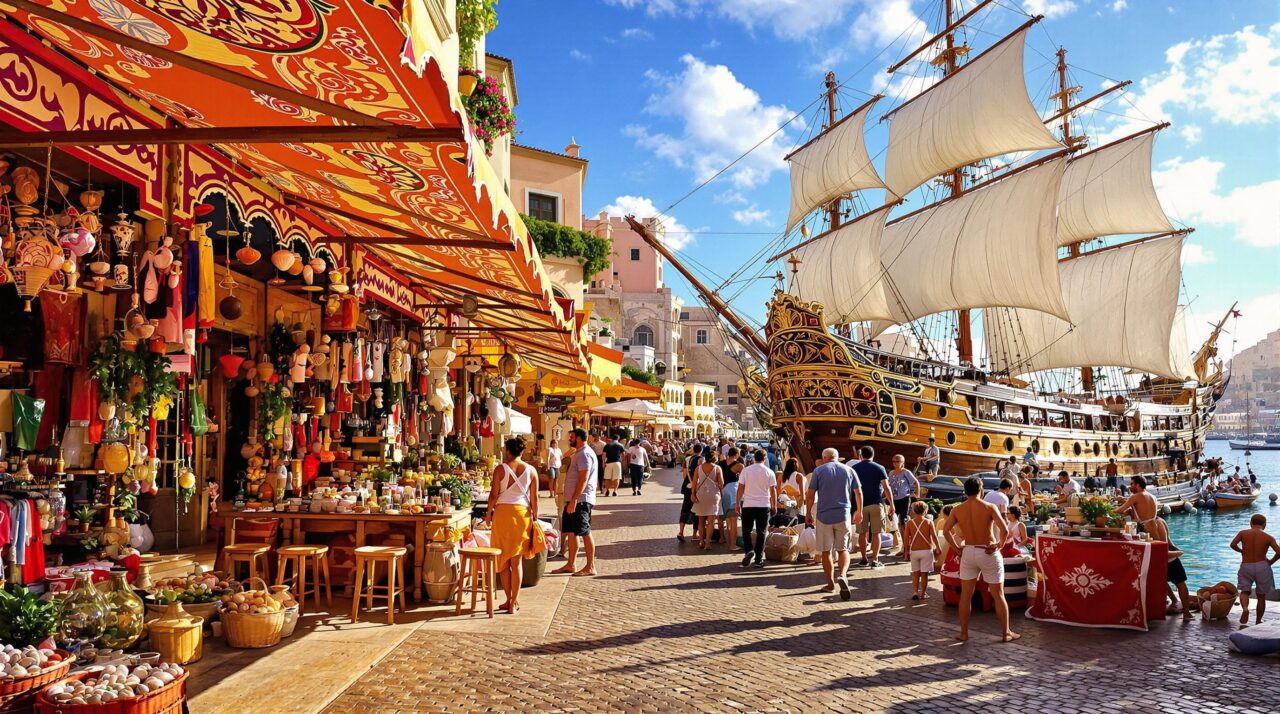
The Phoenicians emerged as formidable navigators of the Mediterranean, their ingenuity in shipbuilding reshaping trade dynamics.
Their city-states, like Tyre and Sidon, thrived as cultural epicenters, yet what lay beneath their commercial success?
The invention of the alphabet marked a pivotal shift in communication, influencing future civilizations.
As they expanded their reach, colonizing territories and establishing Carthage, one must wonder: how did these maritime pioneers balance commerce with cultural identity amidst the tides of ancient power?
Highlights
Hide- The Phoenicians thrived as seafaring traders, establishing vibrant commerce hubs along the Mediterranean coast through city-states like Tyre, Sidon, and Byblos.
- Their innovative shipbuilding and navigation techniques transformed maritime trade, enabling extensive networks that connected diverse cultures and facilitated economic growth.
- The Phoenician alphabet revolutionized written communication, influencing the development of Greek and Latin scripts, and enhancing trade and cultural exchange.
- Carthage, a prominent Phoenician colony, became a major power in the western Mediterranean, showcasing their military and economic prowess through strategic trade networks.
- Archaeological discoveries reveal the Phoenicians' significant cultural and commercial legacy, despite challenges in understanding their history due to limited native texts.
Seafaring City-States and Coastal Origins
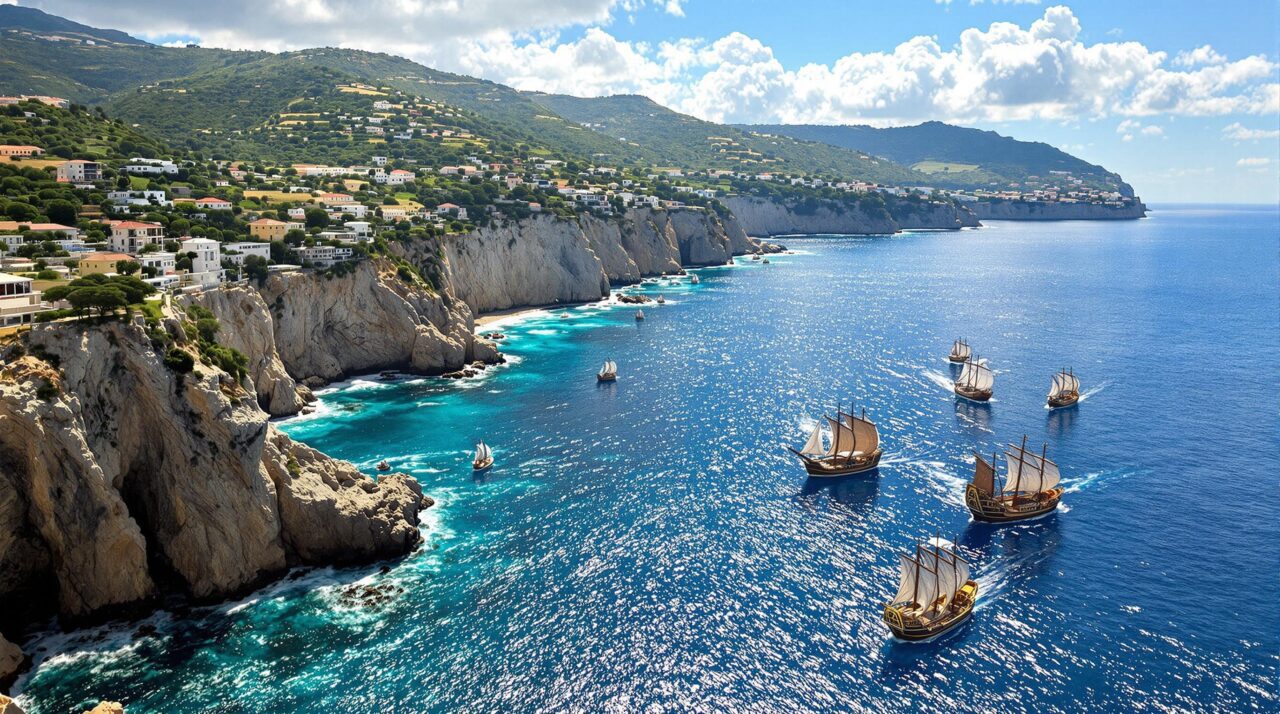
The geography of the Phoenician coast, with its natural harbors and rugged terrain, birthed lively city-states like Tyre, Sidon, and Byblos, each a proof of maritime ingenuity.
How did these coastal origins shape their identities as seafaring powerhouses, and what strategies did they employ to navigate the complexities of trade and diplomacy?
The interplay of land and sea not only defined their existence but also set the stage for their enduring legacy in the Mediterranean world.
Geography and Strategic Coastal Settlements
Nestled between the rugged mountains and the azure sea, the geography of the Phoenicians shaped their destiny as seafaring masters.
With access to abundant timber and natural harbors, these coastal city-states thrived on lively trade routes that connected distant cultures.
What secrets did these strategic settlements hold, and how did their unique landscapes influence the rise of a maritime empire?
Narrow Strip Between Mountains and Sea
Amidst the rugged cliffs and shimmering waves of the Mediterranean, a narrow strip of land emerged as a cradle of civilization for the Phoenicians.
This unique geography fostered:
- Strategic seafaring city-states.
- Flourishing trade networks.
- Cultural exchanges that transcended horizons.
Could such a constrained space nurture boundless ambition?
Here, the interplay of land and sea ignited a quest for freedom and exploration.
Access to Timber, Trade Routes, and Natural Harbors
While the allure of the Mediterranean beckoned, the Phoenicians thrived in their coastal settlements, driven by access to essential resources like timber and natural harbors.
Their mastery of trade routes transformed the seas into avenues of opportunity.
How did these strategic locations empower their ambitions?
Was it their ingenuity that carved paths to wealth and influence across distant shores?
Key City-States: Tyre, Sidon, and Byblos
The city-states of Tyre, Sidon, and Byblos stand as lively representations of the Phoenicians’ mastery of the Mediterranean, each uniquely contributing to a tapestry of maritime prowess and cultural exchange.
How did the independent governance of these centers fuel fierce competition on the high seas while also fostering intricate economic ties?
In exploring their distinct roles, one may uncover the delicate balance between rivalry and collaboration that defined Phoenician society.
Independent Rule and Maritime Competition
As the sun dipped below the horizon, casting golden hues across the Mediterranean, the city-states of Tyre, Sidon, and Byblos emerged as formidable powers in their quest for independence and maritime supremacy.
Their legacy revolved around:
- Strategic naval prowess
- Thriving trade networks
- Cultural resilience
What drove their ambitions?
And how did they navigate the turbulent waters of competition?
The quest for freedom shaped their destinies.
Cultural and Economic Roles of Each Center
Emerging from the coastal cradles of the Mediterranean, the city-states of Tyre, Sidon, and Byblos each carved unique identities that reflected their cultural and economic aspirations.
Tyre, a hub of trade and craftsmanship, Sidon, renowned for its glass and textiles, and Byblos, the cradle of writing—what drove their relentless pursuit of prosperity?
Did their legacies pave pathways to freedom in a constrained world?
Maritime Trade and Economic Influence
The Phoenicians transformed the Mediterranean into a lively tapestry of commerce, weaving together distant lands through innovative shipbuilding and nautical advancements.
As they navigated the azure expanse, they established intricate trade networks that not only facilitated the exchange of goods but also ideas and cultures.
How did these maritime pioneers shape the economic landscape of their time, and what legacy did their ventures leave on the civilizations that followed?
Shipbuilding and Nautical Innovations
The Phoenicians, renowned for their maritime prowess, crafted innovative vessels like the bireme, which transformed trade routes across the Mediterranean.
Their mastery of navigation techniques opened vast expanses of ocean, inviting questions about the interplay between technology and economic dominance.
How did these advancements not only shape their own destiny but also influence the cultures and economies of distant lands?
Design of the Bireme and Merchant Vessels
Biremes and merchant vessels served as the backbone of Phoenician maritime prowess, showcasing a blend of innovative design and practical functionality that transformed trade across the Mediterranean.
- Dual-rowed oars enhanced speed and maneuverability.
- Shallow drafts allowed access to coastal ports.
- Sturdy hulls guaranteed durability against turbulent waves.
How did these vessels not only carry goods but also shape civilizations?
What secrets did they carry across the waves?
Navigation Techniques Across Open Waters
With the mastery of ship design firmly established, Phoenician navigators ventured boldly across open waters, employing sophisticated techniques that would redefine maritime trade.
Their use of celestial navigation and keen observation of wind patterns raised questions about human resilience and ingenuity.
Could these ancient mariners, with their fearless spirits, reveal the secrets of the sea, paving the way for an era of unprecedented economic freedom?
Trade Networks Across the Mediterranean
The intricate web of trade networks established by the Phoenicians transformed the Mediterranean into a bustling marketplace of goods and cultures.
As timber, lively dyes, precious metals, and exquisite glass flowed between distant shores, one must wonder how these exchanges shaped the identities of empires and the very fabric of society.
What enduring legacies did these maritime routes leave in their wake, connecting peoples across vast horizons?
Exchange of Timber, Dyes, Metals, and Glass
Across the vast expanse of the Mediterranean, an intricate tapestry of trade flourished, characterized by the exchange of essential commodities such as timber, dyes, metals, and glass.
This dynamic commerce raised compelling questions about cultural interconnections and economic power.
Key elements included:
- Timber for shipbuilding
- Bright dyes from shells
- Precious metals for currency
How did these elements shape identities and influence empires?
Establishing Outposts and Connecting Empires
As maritime routes crisscrossed the Mediterranean, Phoenician traders not only navigated the waters but also forged connections that transcended cultural and political boundaries.
Their outposts, like beacons of commerce, symbolized unity in diversity.
How did these networks reshape identities and empower empires?
Through trade, they interwove destinies, crafting a tapestry of innovation and cooperation that still resonates in the quest for freedom and prosperity.
Invention and Spread of the Alphabet
The emergence of the Phoenician script marks a pivotal moment in human communication, transforming symbols into a powerful medium of expression.
How did the inscribing of thoughts on tablets, scrolls, and stone reshape the cultural landscapes of the Mediterranean? This innovation not only facilitated trade and diplomacy but also sowed the seeds for the alphabets that would flourish across civilizations.
The Birth of the Phoenician Script
The emergence of the Phoenician script marked a transformative moment in communication, offering a simplicity and adaptability that catered to the needs of bustling merchants.
How did this innovative alphabet not only facilitate trade but also lay the groundwork for the Greek and Latin scripts, echoing through the corridors of history?
This pivotal development raises questions about the profound impact of written language on the interconnectedness of ancient civilizations.
Simplicity and Adaptability for Merchants
While traversing the bustling trade routes of the Mediterranean, Phoenician merchants discovered that effective communication was crucial for their success.
Their script, characterized by simplicity and adaptability, enabled them to convey critical information swiftly.
This innovation raised profound questions about the essence of trade:
- How did language shape their commercial relationships?
- What freedoms did this alphabet provide?
- Could simplicity unleash greater prosperity?
Influence on Greek, Latin, and Modern Alphabets
Language served as a powerful catalyst for the Phoenicians, shaping their commercial landscape and influencing cultures far beyond their shores.
Their innovative alphabet, a symphony of simplicity, found resonance in Greek and Latin scripts.
How did these symbols, born of trade necessity, evolve into tools of expression?
This transformative lineage continues to empower modern communication, echoing the Phoenicians’ enduring legacy across centuries.
Writing on Tablets, Scrolls, and Stone
Inscriptions etched into stone and the delicate scrolls of ancient tablets reveal the Phoenicians’ profound connection to the written word, a tool that transcended mere communication.
How did these symbols, born from necessity, evolve into a powerful medium for record-keeping and commerce, shaping the very fabric of Mediterranean society?
As artifacts emerge from the sands of time, they beckon a closer examination of the alphabet’s transformative journey and its far-reaching implications.
Evidence from Inscriptions and Artifacts
The emergence of the Phoenician alphabet stands as a pivotal moment in the tapestry of human communication, weaving together the threads of culture and commerce across the Mediterranean.
- Inscriptions on pottery revealing trade routes.
- Stone tablets inscribed with early alphabetic characters.
- Artifacts showcasing the evolution of writing materials.
What stories lie dormant within these ancient symbols, waiting to be unraveled?
Role in Record-Keeping and Commerce
Releasing the potential of the Phoenician alphabet transformed the Mediterranean world, facilitating the exchange of goods and ideas like never before.
This innovative script not only streamlined record-keeping but also ignited commerce across vast distances.
How did this newfound literacy empower merchants and shape societies? The ability to inscribe thoughts on tablets and scrolls heralded a revolutionary era, fostering connectivity and freedom in trade.
Cultural Identity and Religious Beliefs
The Phoenicians crafted a vibrant fabric of cultural identity, woven through their pantheon of gods and sacred sites that punctuated the Mediterranean landscape.
How did their artistic styles and symbolic motifs reflect the intricate relationship between faith and daily life?
This exploration reveals not only their devotion but also the profound ways in which their beliefs shaped their communities and interactions with neighboring civilizations.
Pantheon of Gods and Sacred Sites
The Phoenicians’ reverence for deities such as Baal, Astarte, and Melqart reveals a complex tapestry of cultural identity intertwined with their sacred sites.
Temples and altars served not only as physical manifestations of devotion but also as communal spaces where rituals unfolded, echoing the spiritual heartbeat of their society.
How did these practices shape their interactions with the wider Mediterranean world, and what remnants of this divine legacy linger in modern understanding?
Worship of Baal, Astarte, and Melqart
Amidst the sun-drenched shores of the Mediterranean, the worship of deities such as Baal, Astarte, and Melqart reveals a complex tapestry of cultural identity and religious beliefs among the Phoenicians.
Their reverence encompassed:
- Fertility and harvest through Astarte.
- Storm and agricultural prosperity with Baal.
- Maritime strength and protection by Melqart.
How did these gods shape their society’s values and aspirations?
Temples, Altars, and Ritual Offerings
While exploring the remnants of Phoenician civilization, one cannot ignore the profound significance of their temples, altars, and ritual offerings, which served as essential expressions of their cultural identity and religious devotion.
What mysteries do these sacred sites hold? Each stone, each offering invites contemplation of a world where the divine intertwined with daily life, reflecting a society that sought harmony with their pantheon of gods.
Artistic Styles and Symbolic Motifs
The intricate ivory carvings, lively glassworks, and exquisite metalcraft of the Phoenicians reveal a complex weave of cultural identity and religious beliefs that resonate with the artistry of neighboring civilizations.
What do these shared themes suggest about the interplay of influences that shaped their artistic expressions, and how might they reflect a collective spirituality?
As one examines these symbolic motifs, a deeper understanding of the Phoenician worldview emerges, inviting contemplation on their place within the broader Mediterranean narrative.
Ivory Carvings, Glassworks, and Metalcraft
Artistry flourished among the Phoenicians, revealing a complex interplay between cultural identity and religious beliefs through their ivory carvings, glassworks, and metalcraft.
These creations raise compelling questions about their significance:
- Ivory Carvings: What stories were etched in their delicate forms?
- Glassworks: How did lively hues reflect spiritual connections?
- Metalcraft: In what ways did craftsmanship embody divine reverence?
Such artistry transcended mere aesthetics, fostering a rich cultural dialogue.
Shared Themes with Neighboring Cultures
Amidst the lively expressions of craft, the Phoenicians also engaged in a broader cultural dialogue with their neighboring civilizations, reflecting shared themes of identity and spirituality.
Their artistic styles, infused with symbolic motifs, raise questions about interconnectedness: How did these exchanges shape their beliefs?
What reflections of a collective consciousness emerged through their art, revealing a tapestry of shared existence throughout the Mediterranean?
Colonization and the Founding of Carthage
As the Phoenicians ventured beyond the familiar shores of the Levant, they sowed the seeds of a new civilization that would rise to prominence in the western Mediterranean.
Carthage emerged not just as a settlement but as a formidable powerhouse, challenging the dynamics of trade and power in an era ripe for transformation.
What drove these intrepid seafarers to establish such a pivotal stronghold, and how did their ambitions reshape the ancient world?
Expanding Beyond the Levantine Coast
The Phoenicians’ expansion beyond the Levantine coast was driven by a complex interplay of ambition, resource scarcity, and the allure of new trade routes.
As they established settlements from North Africa to Iberia, one must ponder the transformative impact of these colonies on the cultural and economic landscape of the Mediterranean.
What motivated these seafarers to plant their roots so far from home, and how did their legacy shape the civilizations that followed?
Reasons for Migration and Overseas Settlements
Driven by a relentless quest for resources and trade opportunities, the Phoenicians initiated an ambitious journey beyond their Levantine homeland, ultimately leading to the establishment of Carthage and other colonies across the Mediterranean.
Their motivations can be encapsulated in three key aspects:
- Economic Expansion: Seeking lucrative trade routes.
- Resource Acquisition: Necessitating diverse raw materials.
- Cultural Exchange: Fostering innovation and new ideas.
What drove their indomitable spirit?
Locations from North Africa to Iberia
Across the sun-drenched shores of North Africa and the rugged coastline of Iberia, the Phoenicians carved out a legacy of exploration and colonization that reshaped the Mediterranean landscape.
What drove them to establish Carthage and other settlements? Was it the allure of trade, the thirst for freedom, or an insatiable spirit of adventure?
Their journey echoed a profound quest for autonomy across turbulent seas.
Carthage as a Powerhouse of the West
Carthage emerged as a formidable force, its lively trade networks and military prowess weaving a tapestry of influence that spanned the Mediterranean.
Yet, could the very ambitions that fueled its rise also sow the seeds of rivalry with Rome, a burgeoning power on the horizon?
As the echoes of Phoenician heritage resonated through its streets, what legacy did Carthage ultimately leave in the annals of Western history?
Trade, Military, and Rivalry with Rome
As the sun dipped below the horizon, casting long shadows over the bustling harbors of the Mediterranean, a question loomed: how did the Phoenicians, through their exceptional trade networks and military prowess, establish Carthage as a formidable power that would rival even the mighty Rome?
- Strategic maritime routes
- Innovative naval technology
- Diplomatic alliances
These elements forged a thriving empire, provoking inevitable conflict with Rome.
Continuation of Phoenician Influence
How did the seeds of Phoenician influence blossom into the formidable power of Carthage?
Through relentless colonization, the Phoenicians established a dynamic network of trade and cultural exchange.
Carthage emerged not merely as a city, but as a beacon of innovation and resilience.
Could this thriving powerhouse have redefined the very essence of freedom in the ancient world, challenging the status quo?
Interaction with Ancient Powers
The Phoenicians, skilled navigators and traders, wove intricate relationships with powerful civilizations like Egypt, Assyria, and Persia, shaping the cultural tapestry of the ancient world.
How did these interactions influence not only their own identity but also the legacies left behind in Mediterranean civilization?
As they exchanged goods and ideas, the question arises: what lasting imprint did the Phoenicians leave on the very empires they engaged with?
Relations with Egypt, Assyria, and Persia
The intricate dance of diplomacy between the Phoenicians and the mighty powers of Egypt, Assyria, and Persia reveals a tapestry woven with tribute and strategic alliances.
How did the weight of foreign rule shape the daily lives of the Phoenician people, infusing their culture with both resilience and adaptation?
This interplay not only highlights their political acumen but also invites reflection on the enduring impact of external influences on identity and autonomy.
Diplomacy, Tribute, and Political Maneuvering
Diplomacy among the ancient powers of the Mediterranean reveals a complex tapestry of relationships woven by the Phoenicians, who navigated the intricate waters of political maneuvering with remarkable acumen.
Their strategies included:
- Forming alliances to bolster trade.
- Offering tribute to appease powerful neighbors.
- Skillfully balancing loyalties among Egypt, Assyria, and Persia.
How did these tactics shape their legacy and influence the tides of power?
Impact of Foreign Rule on Daily Life
Foreign rule cast a profound shadow over daily life in Phoenician cities, intertwining local customs with the influences of dominant powers like Egypt, Assyria, and Persia.
How did these external forces reshape identity, trade, and spirituality? The fusion of traditions sparked innovation, yet whispered of lost autonomy.
Were Phoenicians mere puppets of empires, or did they skillfully navigate their own destinies amidst foreign dominion?
Legacy in Mediterranean Civilization
The Phoenicians, with their unparalleled ability to weave connections across the Mediterranean, left an indelible mark on the civilizations they encountered.
How did their lively artistic expressions and innovative trade practices shape the cultures of ancient powers, and in what ways did they facilitate the exchange of knowledge that transcended borders?
Their legacy invites contemplation on the profound interplay of ideas that defined this ancient world.
Adoption of Ideas, Art, and Commerce
As the Phoenicians navigated the bustling waters of the Mediterranean, they became not merely traders but essential conduits of cultural exchange, intertwining their legacy with that of the ancient powers surrounding them.
Their influence manifested in:
- Artistic styles that blended traditions.
- Innovative trade practices fostering economic interdependence.
- The adaptation of religious concepts, enriching spiritual landscapes.
What enduring freedoms did these exchanges cultivate?
Role in the Transmission of Knowledge
While immersed in the intricate fabric of Mediterranean civilization, the Phoenicians emerged as pivotal agents in the diffusion of knowledge, seamlessly weaving together the intellectual threads of diverse cultures.
How did their trade routes facilitate the exchange of ideas? In what ways did their innovations inspire others?
Their legacy resonates, sparking curiosity about the interconnectedness of ancient wisdom and its enduring impact on civilization’s evolution.
Archaeological Discoveries and Modern Studies
Archaeological discoveries have revealed a tapestry of artifacts that illuminate the complex legacy of the Phoenicians, yet each find raises as many questions as it answers.
How do these remnants of a once-flourishing civilization challenge or reaffirm our understanding of their history?
As modern scholars grapple with the fragmented narrative of Phoenician life, the quest to piece together their story becomes an intricate puzzle, fraught with challenges and revelations.
Key Excavations and Recovered Artifacts
The remnants of royal sarcophagi and ancient temples paint a vivid portrait of Phoenician life, hinting at a civilization deeply intertwined with the mysteries of the afterlife and the divine.
Excavations of harbor remains reveal not just the physical structures of trade but also the technological advancements that fueled their far-reaching commerce.
What stories do these artifacts whisper about the Phoenicians’ prowess and their enduring legacy in the tapestry of Mediterranean history?
Royal Sarcophagi, Temples, and Harbor Remains
Beneath the sun-kissed sands of ancient Phoenician cities, the remnants of royal sarcophagi, grand temples, and bustling harbors whisper tales of a civilization that once thrived in the Mediterranean.
- Elaborate sarcophagi revealing intricate artistry
- Majestic temples dedicated to deities, showcasing architectural prowess
- Harbor remains hinting at lively trade and cultural exchange
What stories lie within these silent witnesses of history?
Evidence of Long-Distance Trade and Technology
Ancient Phoenician trade routes, marked by the discovery of imported goods and sophisticated technology, reveal a civilization adept at maneuvering both land and sea.
What secrets lie within the artifacts unearthed from ancient harbors? Each recovered item whispers tales of distant shores and cultural exchanges.
How did these maritime pioneers shape the Mediterranean world, and what legacy of innovation did they leave behind?
Challenges in Tracing Phoenician History
Tracing the history of the Phoenicians presents a labyrinth of challenges, primarily due to the scarcity of native texts and the complexities of colonial overlap.
How can historians piece together the identity of a civilization often depicted through the lens of its conquerors? This reliance on external sources raises compelling questions about authenticity and bias in the narrative of this enigmatic maritime culture.
Scarcity of Native Texts and Colonial Overlap
The enigma of Phoenician history lies in the scarcity of native texts and the complexities of colonial overlap, presenting a formidable challenge for scholars.
This raises critical questions about their identity and legacy:
- How do external narratives shape the understanding of Phoenician culture?
- What implications arise from the limited primary sources?
- In what ways does colonial interaction obscure authentic histories?
Interpretations Based on External Sources
External narratives, often shaped by the perspectives of neighboring civilizations such as the Greeks and Romans, complicate the understanding of Phoenician history.
How much of their identity is obscured by these external lenses?
Archaeological discoveries reveal fragmented truths, prompting modern scholars to ponder: can the essence of the Phoenicians transcend the biases of their contemporaries, or are they forever lost to history’s interpretations?
Wrapping Up
In the tapestry of history, the Phoenicians wove threads of innovation and exploration, their ships cutting through the azure waves like arrows of ambition.
As architects of commerce and culture, they left an indelible mark on the Mediterranean, inviting us to ponder: what echoes of their legacy ripple through time?
The whispers of their alphabet still resonate, while the ruins of Carthage stand as silent sentinels, guarding the secrets of a civilization that once danced upon the sea’s embrace.

